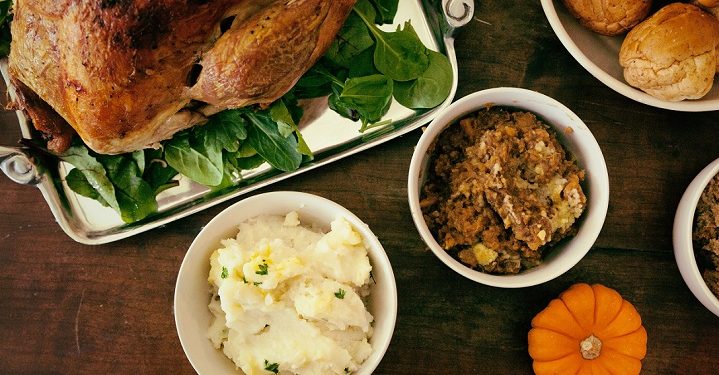When the Pilgrim men, women, and children celebrated God’s provision in the fall of 1621, they did so with nearly 100 pagans.
The harvest celebration was an English tradition, but to the surprise of the small band of European settlers, Chief Massasoit showed up with 90 Wampanoag Indian warriors for the party. The Pilgrims, on the other hand, numbered just over 50, as half of their members had died since setting out for the New World from Europe.
Edward Winslow recounted the event: “Our harvest being gotten in, our governor sent four men on fowling, that so we might after a special manner rejoice together, after we had gathered the fruits of our labors; they four in one day killed as much fowl, as with a little help beside, served the company almost a week, at which time amongst other recreations, we exercised our arms, many of the Indians coming amongst us, and amongst the rest their greatest king Massasoit, with some ninety men, whom for three days we entertained and feasted, and they went out and killed five deer, which they brought to the plantation and bestowed on our Governor, and upon the Captain and others. And although it be not always so plentiful, as it was at this time with us, yet by the goodness of God, we are so far from want, that we often wish you partakers of our plenty.”
The Pilgrims, unlike some Europeans, came to the New World not to plunder, but to raise their children in the fear of the Lord, cultivate the land, and advance the gospel of Jesus Christ. Governor William Bradford explained the reasons for the voyage to America: (1) the church was unlikely to grow in Holland (which is where the Pilgrims travelled to prior to coming to America), (2) the people were being worn down by heavy labor in Holland and such an experience would lead to their community diminishing or scattering, (3) they were concerned that their children were being drawn away into worldliness, and (4) they desired to spread the gospel of the kingdom of Christ.
Concerning the last point, Bradford explained: “Lastly (and which was not least), a great hope and inward zeal they had of laying some good foundation, or at least to make some way hereunto, for the propagating and advancing the gospel of the kingdom of Christ in those remote parts of the world; yea, though they should be but even as stepping-stones unto others for the performing of so great a work.”
Because of these goals, the Pilgrims brought their wives and children with them. They were not a bunch of explorers or treasure hunters, they were families. And they came to a land full of pagan, ungodly religious practices, including cannibalism among certain American tribes. However, the Pilgrims cultivated a peaceful relationship with the Indians, most notably Chief Massasoit and his people. It was not until the following generation that hostilities broke out in King Philip’s War.
While modern leftist sensibilities are offended at the idea of European immigrants coming to America and making it their home in the 17th century, they seem to be happy with everyone else doing so today. But the truth is that America, like nearly every other place, has experienced various societal migrations and re-populating phenomena. (Recent studies even confirm that the people living in America when Europeans arrived had displaced a previous population. So who are the real natives?)
The difference with the Pilgrim and Puritan migrations was that they carried with them the gospel of Jesus Christ. With the massive amount of people migrating, there were still, of course, wicked men who came to America who did not follow God’s Law-Word. But many did obey Christ and made America a better place for it. In fact, the Pilgrims likely present us with the first case of Englishmen being tried, found guilty, and executed for the murder of an Indian. Those who view all the early settlers as oppressors must consider this case. Bradford and the Pilgrims sought to apply God’s Law-Word equally to all, as laid out in Numbers 15:16: “One law and one manner shall be for you, and for the stranger that sojourneth with you.”
The Pilgrims, and the Puritans who followed them, helped to make America a better place, with Christianity providing the main influence, rather than paganism.
During that first Thanksgiving, however, they were in a pagan land, with immense challenges ahead of them.
And now, 400 years later, it seems that we find ourselves once again in a pagan land, with immense challenges ahead of us. The foundation of Christian morality has been demolished. Fornication, adultery, baby sacrifice, and idolatry seem to reign.
Well, now we know what the Pilgrims faced upon arrival.
The Indians and other Native Americans were not worse people than the Christian Pilgrims, they just had a pagan worldview. And worldviews always lead to consequences. And bad worldviews lead to bad consequences.
This Thanksgiving, Christians in America find themselves surrounded by an increasingly pagan culture. Nevertheless, there is still a lot to be thankful for, including the fact that Christians have changed pagan cultures before. We have our work cut out for us, yes. But the solution is at the heart of Thanksgiving: the family. Christian families have ever been a transformative force for good in society. So, dear Christian, as you celebrate Thanksgiving in a pagan land this year, remember that our task is to be fruitful and multiply that we “should be but even as stepping-stones unto others for the performing of so great a work.” Be thankful for Christian families, protect the family, and grow your family. Such things have overcome paganism before and can do so again.

Chris Hume is the host of The Lancaster Patriot Podcast and the author of several books, including Seven Statist Sins. He can be reached at info@thelancasterpatriot.com.






























Comments 1